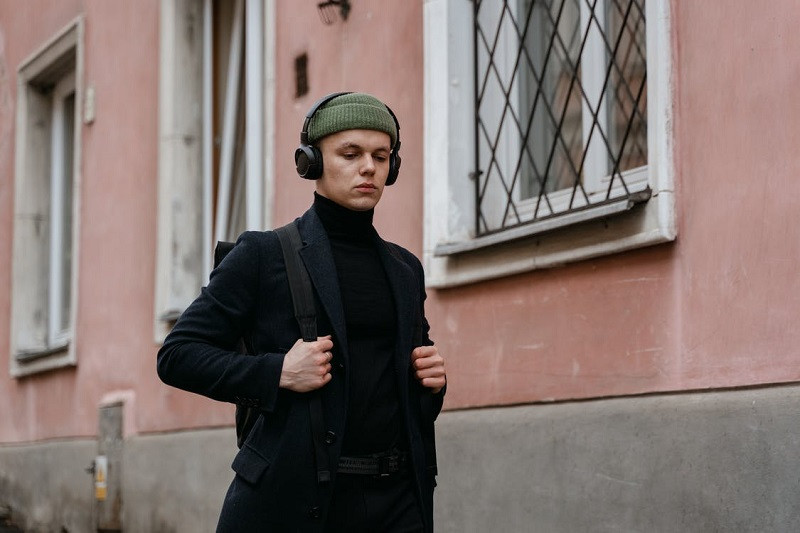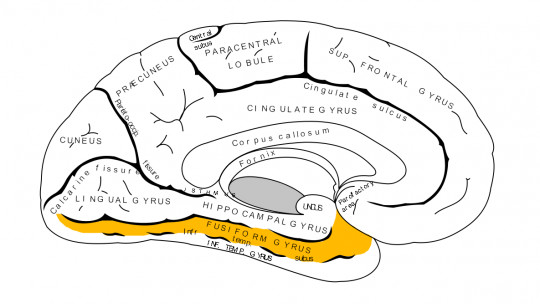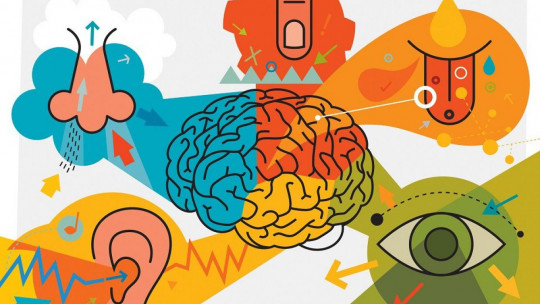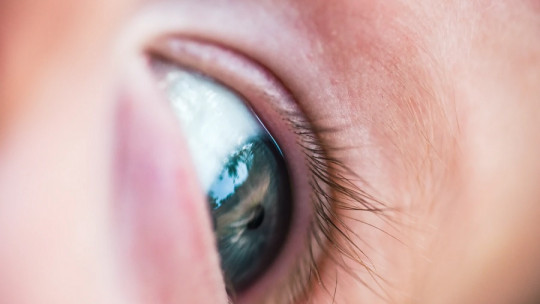Hear colors? Savor sounds? See the colored letters? Attribute personality to numbers?
As surprising as it may seem, there are many people who have the peculiarity of mixing sensations, a phenomenon known as synesthesia which can manifest itself in very different ways.
There are those who hear colors, others taste the letters or even see touch… There are so many! types of synesthesia that we could make an encyclopedia with them! Let’s find out which are the main ones.
What is synesthesia?
Can you imagine a totally different way of perceiving reality? In school we were taught that there are 5 senses: hearing, taste, sight, touch and smell. These senses are each perceived by a different organ, in theory.
But, What would happen if when we touched a surface with a certain texture we also heard a sound? What would the world look like if our sounds were intermingled? Would it be chaos or an advantage? Keep reading to enter a totally different world.
All our lives we have heard that there are 5 senses (there are actually more, but that debate is not our concern right now). Human beings have hearing, sight, taste, smell and touch and each of these senses is perceived with a different organ: we see with our eyes, we hear with our ears, we taste with our tongue, we smell with our nose and we touch with our skin.. But what would happen if when we touched something we heard a melody? What if when we heard a song we saw a vivid multicolored landscape? We call this synesthesia.
Synesthesia is a phenomenon by which sensory perception occurs simultaneously through two different senses, which are interconnected For example, there are those who also see colors when listening to music, while others associate letters, numbers or names of people with certain colors. Combinations of senses of all types can occur, which is why it is known that there are many different types of synesthesia, and it is common for a person with synesthesia to also have a second or third modality of this peculiar phenomenon.
It seems that this phenomenon occurs more frequently in women, between 3 and 8 times more than men, and the reason for this is not known. You are also more likely to have synesthesia if you are a left-handed person. There is a hereditary component behind the appearance of the phenomenon, since in families that have a member who experiences synesthesia there is a high probability that another member also presents this phenomenon, and it seems that it would be associated with the X chromosome. It is also common in people with the disorder. autism spectrum.
Normally, synesthesia occurs with two of the five classic senses, although on quite rare occasions it can occur that three of them are involved. Regardless of how many senses are involved, this phenomenon seems to be very rare, with statistics suggesting that it occurs between 1 and 4% of the population, although there are studies that suggest that 15% of the general population would experience some type of synesthesia.
Despite how relatively common it could be, many people don’t even know they experience synesthesia! In fact, it is not strange that synesthetic people discover it by pure chance, discovering that smelling colors or seeing letters of different colors is not normal.
The main types of synesthesia
Although all the senses can be combined in all possible ways, the most common perceptual interferences of synesthesia have to do with the senses of taste and hearing, with color/tone correspondence being one of the most frequent. Below we are going to see some examples of relatively common types of synesthesia.
1. Grapheme-color synesthesia
Grapheme-color synesthesia It is the most common type, estimated to occur in 49% of synaesthetic people It consists of seeing symbols of a certain color, such as letters and numbers or words as a whole.
The poem “Vowels” by French poet Arthur Rimbaud is considered an example of this type of synesthesia in the art world.
A curiosity about this type of synesthesia is that there are some associations that are more common than others regardless of the person. For example, the association between the letter A and the color red is usually quite common in synaesthetic people.
2. Chromesthesia
Cromethesia consists of sensory association between colors and sounds, also including the ability to perceive sounds or melodies when observing colors and the reverse process Some studies suggest that 30% of synaesthetic people have chromesthesia.
Some well-known artists, such as the Russian painter Vasili Kandinsky and the poet Charles Baudelaire, presented this type of synesthesia, and showed their particular sensory interferences in their artistic creation.

3. Lexical-gustatory synesthesia
People with lexical-gustatory synesthesia They perceive flavors when they hear a word a type of sensory interference that is believed to affect less than 0.2% of the world’s population.
A well-known example of this type of synesthesia is SOMEBODY James Wannerton, a man who claims to taste a waffle every time he hears the word “basketball.”
4. Personification synesthesia
Personification type synesthesia is truly curious and rare, consisting of perceive the “personality” of symbols such as letters or numbers For example, it consists of seeing that W is a surly letter or that 7 is a stingy and malicious number.
5. Shaped numbers
Some synaesthetic people they see shapes when thinking about numbers a type of synesthesia that was first described by statistics and psychometrics pioneer Francis Galton in the late 19th century.
6. Space-time synesthesia
People who have this type of synesthesia They establish a very strong connection between the parameters of time and space , perceiving time as if it were a physical entity. They can organize time with shapes like squares, different sizes depending on how big or small the time period is, or even attribute colors to it.
7. Mirror-touch synesthesia
Mirror-touch synesthesia consists of the perception of tactile sensations when seeing that other people feel them like, for example, seeing someone touch a glass and feeling that it is their fingers that feel the cold, smooth touch of that surface.
It is inevitable to relate to the mirror neurons of the brain, cells that are activated when we see someone do something and that are as if they represent in our mind the behavior that we see in others.
Some have associated mirror-touch synesthesia with above-average levels of empathy.
8. Touch-emotion synesthesia
There are people that feel emotions when touching surfaces with certain textures this type of synesthesia being extremely strange.
9. Auditory-tactile synesthesia
Auditory-tactile synesthesia implies that whoever suffers from it perceives physical sensations when hearing certain sounds This type of synesthesia includes everything from relatively simple sensory interference, such as hearing a squeak while touching a metal surface, to more complex situations such as hearing the word “bolognese” when touching a stone.

10. Spatial sequences
Spatial sequences are a type of synesthesia that consists of see numbers as if they were points in space
A common example of this phenomenon is seeing smaller numbers nearby and larger numbers farther away.
This type of synesthesia has been related to having a better memory than the population average.
11. Linguistic ordinal personification
Linguistic ordinal personification is a peculiar phenomenon in which ordered sequences and personalities or genders are associated An example would be relating the number 5 to an obese person or the letter Y to an aerobics instructor.
How is synesthesia detected?
There are no single diagnostic criteria to detect synesthesia. Being an extremely rare neurological condition that can manifest itself in so many different ways, its detection can be a real challenge. Fortunately, The American neurologist Richard Cytowic has proposed a series of criteria to facilitate the detection of cases of synesthesia
First of all, synesthesia occurs involuntarily and is caused by a sensory stimulus.
Furthermore, synesthetic experiences are projected, that is, they are not seen with the “mental eye” (when we imagine things), but rather they are seen as if it were really outside our body, as a real sensory stimulus.
It is a lasting and generic phenomenon, that is, the association between two or more senses and stimuli is maintained over time For example, if a person sees the letter E as yellow, he will continue to see it as that color in the long term, although it should be said that there are cases of people who can change the way they perceive certain synesthetic sensations. As for the generic, reference is made to the fact that synesthetic people tend to perceive simple sensations, for example, if they hear sounds they will rarely see a complex landscape, but rather simple shapes and colors.
Because two or more senses are involved when perceiving the world, People with synesthesia usually have a great memory This is because they have more clues to remember what they have experienced. For example, if we are people who associate colors with words, we may see a term as long as “sternocleidomastoid” in orange and associate it more easily with the anatomy lesson that we had to memorize for biology class.









